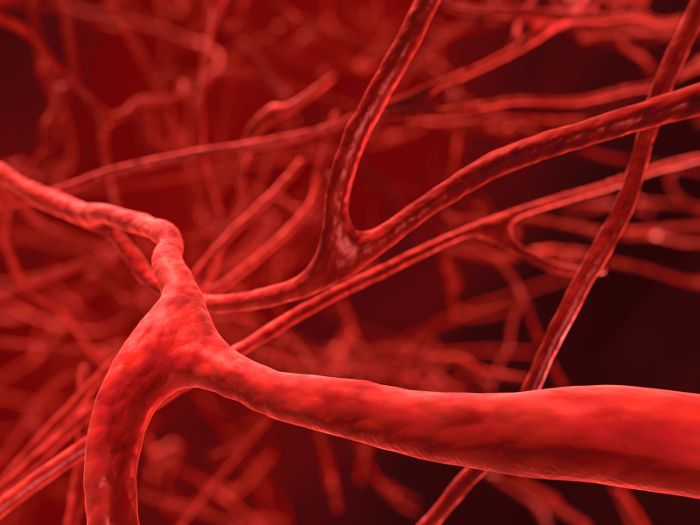Raspberries improve vascular function in new study
The mechanism of action may be linked to raspberry ellagitannins, study researchers say.
Photo © iStockphoto.com/spanteldotru

Raspberries may improve vascular function according to a trial1 recently published in the Archives of Biochemistry and Biophysics. The mechanism of action may be linked to raspberry ellagitannins, study researchers say.
The study was a three-arm, double-blind, crossover randomized controlled trial design. Ten healthy male volunteers between 18 and 35 years of age took part in three treatment sequences in which they were given a control drink or drinks containing either 200 g or 400 g of frozen raspberries mixed with water. Flow-mediated dilation of arteries was measured at baseline, two hours, and 24 hours. Blood samples were also taken at these times to measure plasma raspberry polyphenol metabolites, and urine samples were taken at 24 hours.
When compared to control, flow-mediated dilation significantly increased by 1.6% and 1.2% in the 200-g and 400-g groups, respectively, and at 24 hours by 1% and 0.7%, respectively. The difference in dilation between the experiment groups was not statistically significant. Researchers quantified the polyphenol content of the raspberry drinks and found 27 polyphenolic compounds in all, with 201 mg in the 200-g drink, and 403 mg in the 400-g drink. Ellagitannins and anthocyanins were the most abundant compounds.
Plasma and urine analysis detected 15 ellagitannin metabolites, including “ellagic acid and derivatives urolithins A, B, C, and their glucuronide and sulfate conjugates as well as isourolithin A with corresponding glucuronide and sulfate conjugates.” Ellagic acid saw a significant increase at the two-hour mark, and at 24 hours there was a significant increase in urolithin-A-3-glucuronide, urolithin B-glucuronide, urolithin-A-sulfate, urolithin-B-sulfate, and total urolithins.
Plasma analysis also found 59 phenolic compounds. Compared to control, total quantified plasma polyphenol concentration saw a significant increase at 24 hours following consumption of the 400-g drink. Compared to control, the two metabolites 4-methylgallic-3-O-sulfate and 3,4-dihydroxybenzaldehyde, significantly increased at two hours, and protocatechuic acid-4-O-sulfate and ellagic acid significantly increased at 24 hours following 400 g of raspberries.
Researchers found a correlation between vascular effects and ellagitannin-derived phenolic metabolites. Specifically, at two hours post-consumption, ellagic acid was correlated with flow-mediated dilation. At 24 hours, urolithin-A-3-glucuronide and urolithin-A-sulfate correlated with flow-mediated dilation, but only after consuming 200 g of raspberries.
The researchers write, “At this time, the majority of the circulating polyphenol metabolites are likely gut microbiome–derived phenolic acid metabolites,” and that the differences in polyphenol content at 2- and 24-hours post-consumption “indicate…that the vascular effects of raspberries may be driven both by early readily absorbed metabolites and late gut microbial metabolites of raspberry polyphenols.”
The increase in urolithins in this and previous in vitro studies, the researchers say, “suggests that in particular, the late vascular effects of red raspberry may be caused by gut microbiome–derived phenolic metabolites and, therefore, the gut microbiome may play an important role in mediating beneficial effects of raspberries in healthy humans.”
While further study is required with a larger cohort, the study is significant in that it was able to demonstrate improvement in endothelial function after dietary-achievable amounts of red raspberries.
References:
- Istas G et al. “Plasma urolithin metabolites correlate with improvements in endothelial function after red raspberry consumption: A double-blind randomized controlled trial.” Archives of Biochemistry and Biophysics. Published online May 24, 2018.










